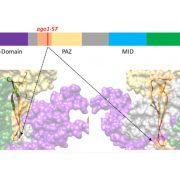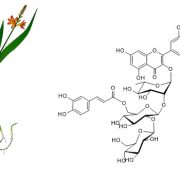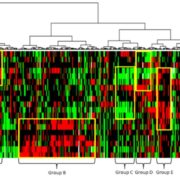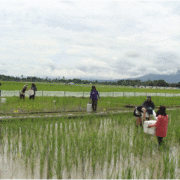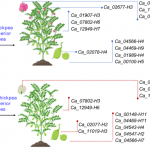Review. Chloroplast development in green plant tissues: The interplay between light, hormones, and transcriptional regulation (New Phytol.)
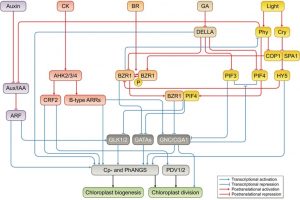 Chloroplasts are indispensable for plant growth and physiological performance; not only for photosynthesis but also for many biochemical processes. Due to the endosymbiont origin of the chloroplast, chloroplast development requires sophisticated machinery to relay the signals between the nuclear and the chloroplast genomes. Although the regulation of chloroplast biogenesis by light and phytohormones has been investigated, the molecular intricacies underlying integration of environmental and endogenous cues remain poorly understood. In this review, Cackett et al. highlight the key importance of transcription factors for interlinking multiple hormone and light signalling pathways to regulate chloroplast and photosynthesis-associated nuclear genes (Cp and PhANGs). The authors spotlight transcription factors such as GOLDEN2 LIKE-1 and 2 (GLK1&2), GATA NITRATE-INDUCIBLE CARBON-METABOLISM INVOLVED (GNC) and CYTOKININ-RESPONSIVE GATA FACTOR-1 (CGA-1) as the major regulatory nodes, while additional players need to be identified. Tuning these transcription regulatory nodes could be a rational approach to optimize chloroplast development, and thus photosynthetic efficiency. The authors conclude that further insights into the regulation of chloroplast development in tissue- and cell-specific manners awaits investigation. (Summary by Prakshi Aneja @PrakshiAneja) New Phytol. 10.1111/nph.17839
Chloroplasts are indispensable for plant growth and physiological performance; not only for photosynthesis but also for many biochemical processes. Due to the endosymbiont origin of the chloroplast, chloroplast development requires sophisticated machinery to relay the signals between the nuclear and the chloroplast genomes. Although the regulation of chloroplast biogenesis by light and phytohormones has been investigated, the molecular intricacies underlying integration of environmental and endogenous cues remain poorly understood. In this review, Cackett et al. highlight the key importance of transcription factors for interlinking multiple hormone and light signalling pathways to regulate chloroplast and photosynthesis-associated nuclear genes (Cp and PhANGs). The authors spotlight transcription factors such as GOLDEN2 LIKE-1 and 2 (GLK1&2), GATA NITRATE-INDUCIBLE CARBON-METABOLISM INVOLVED (GNC) and CYTOKININ-RESPONSIVE GATA FACTOR-1 (CGA-1) as the major regulatory nodes, while additional players need to be identified. Tuning these transcription regulatory nodes could be a rational approach to optimize chloroplast development, and thus photosynthetic efficiency. The authors conclude that further insights into the regulation of chloroplast development in tissue- and cell-specific manners awaits investigation. (Summary by Prakshi Aneja @PrakshiAneja) New Phytol. 10.1111/nph.17839



